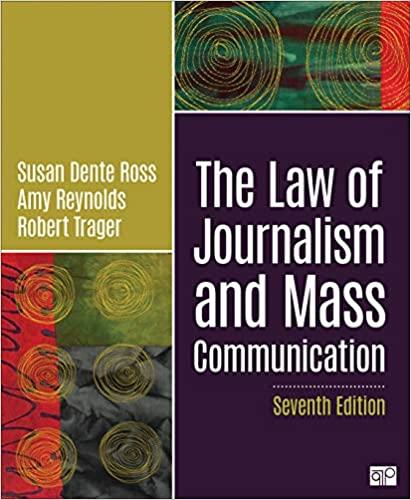Question
The new & young worker When it comes to New and Young Worker Training, employers are required to orientate and train all workers before work
The new & young worker
When it comes to New and Young Worker Training, employers are required to orientate and train all workers
"before" work begins, on safe work procedures, and hazards related to the job. But the term "new worker" isn't
as obvious as it seems. In this case study, we will define what it is to be a new or young worker and the
training required.
As a group, discuss the following:
1. Until what age are you considered a young worker, under WSBC Regulation?
2. If an employee - who has worked for a company for many years - is relocated to a different department,
are they, by WSBC definition, considered a new worker, and should they have to undergo safety
orientation and safe work procedure training again, and why?
3. If you leave a company, and a few months later get re-hired for the exact same job position, are you
considered a new worker, and what type of training should follow?
4. As a group, discuss the importance of young worker training, and list how and why it differs from the mature worker's needs?
5. When putting together a training plan for new or young workers, what topics should be included in the
training?
6. What is the KEY takeaway your group has learned from this case study?
MULTIPLE CHOICE QUESTIONS
Under the Companies and Allied Matters Act, the tests for insolvency do
not include
A. Inability of a company to pay a debt exceeding N2,000, three weeks
after demand
B. The existence of court process issued in respect of a judgment debt
C. A court ruling that the company is unable to pay its debts
D. The existence of company's liability in excess of its assets
E. Outstanding debts owed the company in excess of one billion naira
6. Which meeting must a public company hold within six months of
incorporation?
A. Commencement meeting
B. Promoters' meeting
C. Creditor's meeting
D. Statutory meeting
E. General Meeting
7. For how many years must a financial institution preserve the record of
customer's identification under the Money Laundering (Prohibition) Act?
A. 5 years
B. 8 years
C. 10 years
D. 12 years
E. 14 years
8. The physical element of an offence is known as
A. Intention
B. Actusreus
C. Strict liability
D. Mensrea
E. Obiter dicta
9. Which of the following is not an invitation to treat?
A. Display of goods in a shop window
B. Auction
C. Invitation to tender
D. Advertisement of goods in periodicals
E. Sale of necessaries
10. Winding up of a company may take any of the following forms except
A. Creditors' winding up
B. Members' winding up
C. Winding up by the court
D. Winding up subject to supervision by the court
E. Winding up at the complaint of the liquidator
11. The appointment of a director of a company at a general meeting is by
A. Extra-ordinary resolution
B. Ordinary resolution
C. Special resolution
D. Business resolution
E. Director's resolution
12. The Financial statements of a company shall include the following except
A. The balance sheet as at the last day of the year
B. Aprofit and loss account, or in the case of a company not trading for
profit, an income and expenditure account for the year
C. Notes on the account
D. Auditors' reports
C. Audit Committee's report
Step by Step Solution
There are 3 Steps involved in it
Step: 1

Get Instant Access to Expert-Tailored Solutions
See step-by-step solutions with expert insights and AI powered tools for academic success
Step: 2

Step: 3

Ace Your Homework with AI
Get the answers you need in no time with our AI-driven, step-by-step assistance
Get Started


